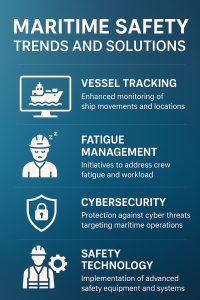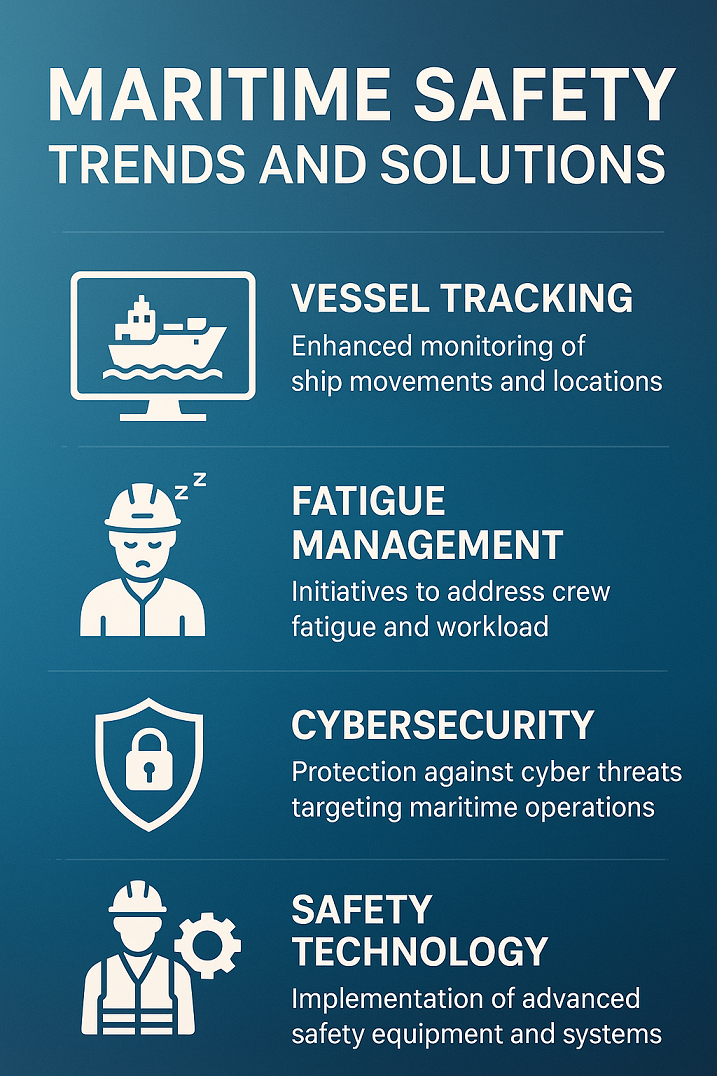A notable rise in maritime casualties during 2024—largely driven by machinery failures and an ageing global fleet—has emerged as a key trend in the latest analysis from Lloyd’s List Intelligence.

The number of maritime casualties increased by 15% in 2024, following a 7% rise in 2023, raising serious concerns for the global shipping industry. This is especially troubling given that the global fleet is expanding at a much slower pace.
This upward trend has been ongoing for several years. While incidents declined by 5% between 2014 and 2018, the number of casualties has risen every year since. Between 2018 and 2024, total incidents jumped 42%, while the global fleet grew by just 10% over the same period.
Trends in Casualties: Key Categories
Lloyd’s List Intelligence categorizes casualty data into:
-
Collisions (vessel-to-vessel)
-
Contacts with static objects (e.g., harbour walls)
-
Fire/explosion
-
Foundering (sinking/submersion)
-
Hull damage (cracks, holes, structural failures)
-
Machinery damage/failure (e.g., rudder loss, fouled propellers)
-
Piracy
-
War-related losses
-
Wrecking/stranding (groundings)
–
Machinery Failures Continue to Dominate
Historically, machinery damage or failure has accounted for the largest share of incidents. In 2014, it represented 38% of all casualties. By 2024, that figure had soared to 60%.
In fact, machinery failures were responsible for 80% of the increase in incidents in 2024 alone. While causes vary, the data points to a primary factor: the increasing age of the global fleet.
Fleet Age Statistics
-
In 2014, 36% of the fleet was over 25 years old; an additional 7% were 20–24 years old.
-
By 2024, these numbers rose to 44% (25+ years) and 9% (20–24 years), respectively.
–
Factors Behind the Ageing Fleet
Several industry dynamics are driving the retention of older vessels:
-
High freight rates and sustained demand for tonnage, especially during 2024, have encouraged shipowners to keep older ships in operation rather than scrapping them.
-
Regulatory uncertainty regarding new emissions and fuel efficiency rules from the IMO and EU has made owners reluctant to invest in newbuilds.
-
Limited shipyard capacity and high construction costs further discourage fleet renewal, pushing owners toward upgrades and retrofits instead.
This has led to a greater share of older ships in service—and an associated rise in casualty risk.
Age and Incident Rates in 2024
-
52% of all incidents involved vessels aged 20 years or more.
-
41% of incidents involved vessels over 25 years old.
-
In contrast, in 2014, only 41% of incidents involved vessels 20+ years, and 32% involved those over 25.
From 2023 to 2024, casualties rose by 358 incidents. Of these:
-
285 were from vessels over 25 years old (80% of the increase).
-
236 were due to machinery failures (83% of those 285).
For machinery-related incidents specifically:
-
In 2024, 45% came from vessels over 25 years old, and another 12% from 20–24 year-olds.
-
In 2014, those figures were 39% and 9%, respectively.
–
Other Age-Linked Casualty Types
Age is also a significant factor in hull damage, which increased by 7% in 2024 to 114 incidents. Nearly 46% of these involved vessels aged 20 years or older.
Mitigation Measures for the Ageing Fleet
The long-term solution is obvious: replacing ageing ships with modern, safer vessels. However, in the short term, shipowners can reduce risk by:
-
Increasing the frequency and quality of maintenance
-
Upgrading outdated machinery and onboard systems
-
Implementing safety retrofits and crew training to mitigate the risks associated with older vessels
–
Fire and Explosion Risks: A Growing Concern
Another area of urgent concern is the rise in fire/explosion incidents, which increased by 18% in 2024, and by 58% since 2014.
These incidents are more likely to result in serious injuries or fatalities, with 27% occurring in the passenger/ferry segment. Immediate steps should be taken to:
-
Enhance fire detection and suppression systems
-
Conduct frequent emergency drills
-
Improve fire safety protocols and crew preparedness
–
Positive Safety Trends
Despite the rising numbers in some categories, there are notable improvements in others:
Collision and Foundering Decline
While the total number of ‘accidental’ casualties (collisions, contacts, foundering, and strandings) rose slightly in 2024, the long-term trend is positive:
-
From 881 incidents in 2014 to 656 in 2024 — a 26% decline.
This progress is likely due to:
-
Better navigation and collision-avoidance technology
-
Improved weather and route planning
-
Stricter safety regulations and training
Piracy Incidents Down
Piracy-related casualties also fell in 2024, with a 48% decline between 2014 and 2024. This reflects:
-
Greater international cooperation
-
Wider use of Best Management Practices (BMP)
-
Improved regional maritime security
But War-Related Casualties Surge
One troubling development is the sharp rise in war-related losses:
-
From zero to three incidents per year (2014–2021)
-
To 51 incidents in 2024, driven by ongoing geopolitical conflicts
This highlights the growing vulnerability of maritime operations in conflict zones and the need for robust risk assessment and crisis planning.
–
Machinery Casualties by Vessel Segment
-
General cargo ships: 26% of all incidents, with a 13% rise in machinery failures
-
Passenger/ferry vessels: 48% rise in machinery issues, 29% increase in total casualties (reaching 672)
-
RoRo/PCTC: 69% overall incident growth, with machinery issues up 87%
-
Bulk carriers: 2% rise in total incidents, machinery failures down 13%
-
Container ships: 2% total incident growth, 10% drop in machinery failures, but fires and collisions increased
-
Tankers: 3% decline in total incidents, but machinery issues rose 11%
-
Gas carriers: No change in total incidents, but machinery failures dropped 35%
–
A Call to Action for Shipowners
While there are bright spots in the data, the overall direction of maritime safety is concerning. The statistics paint a clear picture: the ageing global fleet is driving a sustained rise in casualties, particularly through machinery failure.
It is essential that shipowners, operators, and regulators take immediate action to:
-
Modernize or phase out high-risk older vessels
-
Invest in advanced maintenance and monitoring technologies
-
Adopt new fuels and vessel designs with a safety-first mindset
-
Implement ongoing, comprehensive crew training
The maritime industry is undergoing profound transformation. With that comes opportunity—but also risk. Navigating this change safely will require proactive safety measures, technological innovation, and a shared commitment to protecting lives, assets, and the environment.

